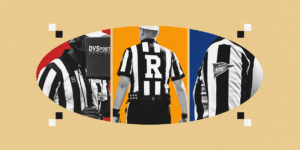A prolonged shortages of veterinarians in areas across the US have caused crises for some pet owners; contributed to mental health issues among veterinary staff; and could leave the country at risk in terms of food safety and public health, experts have warned.
The lack of vets and veterinary professionals is attributed to the high cost of access, long hours and the stress of dealing with animal owners in life and death situations.
The warning comes as Not One More Vet, a veterinary mental health charity, said it had received reports of vets facing cyberbullying from clients – a worrying trend in a profession long at high risk of suicide .
Laura Molgaard, dean of the College of Veterinary Medicine at the University of Minnesota, said the shortage can be traced back four decades.
“Starting around 1980, we saw an increased demand for veterinary services with increased ownership of pets, and also an increased demand from those owners for more services for those pets,” she said.
“And then, over that time, at least in the U.S., there hasn’t been a commensurate increase in veterinary schools or seats in those veterinary schools for a very, very long time.”
The shortages are felt most in rural areas. Part of the reason is that veterinary graduates have to go where the money is – given the student debt they often carry – and jobs in cities pay more. That has left pet owners and other animal owners struggling to get care in some parts of the country — but there are risks beyond pets not receiving adequate care, Molgaard said.
“There is a risk to things like food safety and public health. Veterinarians play an important role in protecting the health of individual animals, but also protecting the health of populations of animals. And we take an oath to protect public health as well,” said Molgaard.
“When we don’t have vets in the community, we do risk the health of animals, people and the environment they share.”
Vets serve as “early detectors of animal disease,” Molgaard said, including diseases that can be transmitted to humans. It was a veterinarian who first identified the West Nile virus, while professionals were also responsible for reporting outbreaks of bird flu, African swine fever and bovine spongiform encephalopathy – better known as “mad cow disease”.
“Veterinarians are at the forefront of detection and surveillance for those kinds of diseases. And when we don’t have veterinarians in a community, those diseases can go undetected until it’s too late,” Molgaard said.
The pressure of the job, and the relatively low pay compared to professions such as human medicine and dentistry, which require a similar level of training, can be intense. Support staff, including veterinary technicians, are often underpaid and overworked, said Liz Hughston, a veterinary specialist and president of the National Veterinary Professionals Union.
“We have a huge problem with people leaving this profession,” Hughston said.
“The pay is not great [for veterinary technicians], and for vets it is not good in relation to their debt burden. Many of the vets come out of school with huge amounts of debt: $400,000 in student debt, and then they get paid somewhere between $85,000 and $105,000 a year to start.
“Most people would look at that and say, ‘Oh, that’s a good wage.’ But when you look at the amount of time they spend in school, the amount of debt they come out with, and then to come out and not be paid that well, relative to their professional degree and training, I think that is one piece.”
Meanwhile, veterinary technicians, who must complete studies in an educational program and pass the veterinary national exam to practice, “are not paid a living wage,” Hughston said. She said that technicians and veterinary assistants often find they can earn more in entry-level retail or fast-food jobs.
“Fast food sucks, but also: you make money. And you are not expected to work overtime, you do not make life and death decisions. You don’t get bitten and scratched,” she continued. “You’re not dealing with zoonotic diseases: you’re not going to get a disease from a hamburger.”
There’s also “sticker shock,” Hughston said, when pet owners find out how much certain treatments will cost. Pet insurance is not widely accepted in the US, so when a cat or dog or turtle gets sick, the owners sometimes have to pay obvious bills. They are often not happy about the price.
“All we want to do is help animals. And then we’re faced with people we have to deal with who tell us how terrible we are, what terrible people we are, that we’re just after the money,” she said.
“Often, because we have the option of euthanasia in veterinary medicine, people make life and death decisions based on finances, and this is soul-killing for veterinary professionals. Because we look at it and we say, ‘We can fix it. It’s fixable.’ But the people can’t pay to fix it.”
Against this background, suicide rates are high. A 2018 study by the Centers for Disease Control and Prevention found that female vets were 3.5 times more likely to die by suicide compared to the rest of the general population, with male vets being 2.1 times more likely to die by suicide .
Gigi Tsontos, executive director of Not one more vetfounded in response to the death of a veterinarian in 2014, said there were several reasons for the number of deaths.
“Some is the workload, some is the connection with the different things that happen in a clinic. You don’t have to go into a veterinary clinic and just pet dogs and cats all day. There are many decisions that are made that are difficult. There are many people involved. Let’s say a family comes in and they have a pet that needs a high level of care, but they can’t afford it – it’s discussed with them,” said Tsontos.
The CDC study found that the suicide rate among veterinarians has been high for the past three decades. However, a new issue facing veterinary professionals is cyberbullying.
“I’ve heard stories of people claiming something happened to their pet – and they took them to a vet. And they just vilify the vet or the vet tech on social media,” said Tsontos.
“Veterinarians try to do the best they can. And they care about animals, and they get into this industry because of that.”

